Remember when the media panicked a bit over eScooters from startups that could fly down Santa Monica Boulevard at 17.5 mph, instead of the advertised 15 mph? They’ve got nothing on this; the Bo Turbo was developed by a team made up of ex-Williams Formula One engineers with a stat sheet that would make a Tesla blush.
What are we talking about here? It’ll out-accelerate a Tesla, at least for a while, has enough battery power (1,800Wh) to go around 150 miles on a charge if you don’t drive too fast, and a top speed of over 100 mph when you do drive too fast. If that’s not impressive enough, the target for this project was to achieve a higher power-to-weight ratio than a Bugatti Veyron, which this supposedly has, thanks to its 24,000W of power.
I had a chance earlier this week to drive the non-Turbo version of the Bo scooter, also known as the Bo Model-M, and was impressed with its Vespa-like monocoque-style chassis and high level of stability. Along for the ride was CEO Oscar Morgan, an ex-Williams engineer. While he was excited to have me try the Bo M, he also couldn’t wait to tell me about this specific scooter.
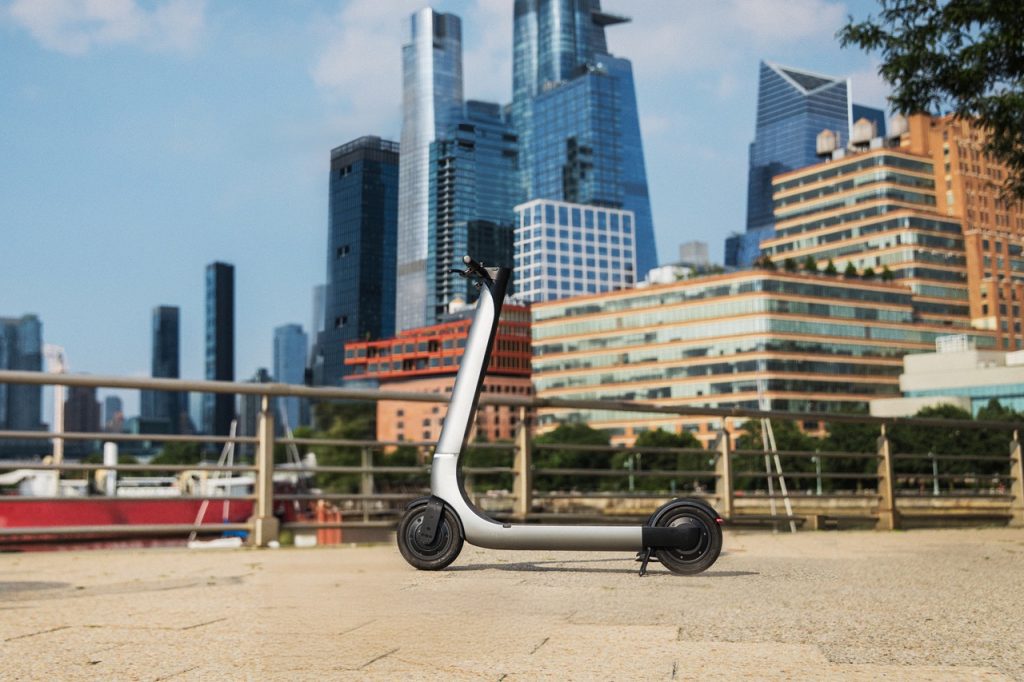
His point was simple: This is a mostly unregulated market in a lot of places, so why not build the wildest scooter you possibly can?
“Our passion is elite vehicle engineering, and we are firm believers in the human spirit of adventure. The UK already has a proud history in this pursuit with the first car to pass 100mph, then Thrust SSC taking the Land Speed record in Nevada,” explained Morgan. “I guess you could say the UK has a proud history of crazy Brits constructing vehicles that ought not be possible.”
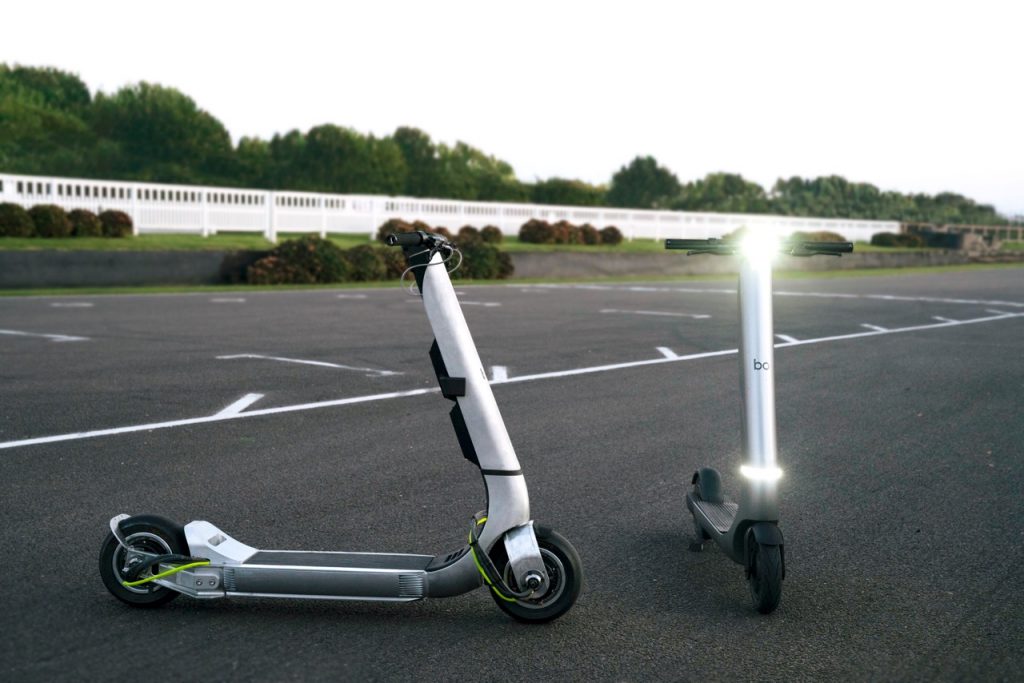
I’ll have a microreview of the Bo M coming next week, but I couldn’t wait to tell you about the Turbo, and neither could Morgan. The team at Bo is a mix of ex-Williams F1 folks and engineers who worked on the Bloodhound World Land Speed Rocket car, so there’s an inevitability to this. While the company has been diligently working on selling high-end scooters to car geeks (Morgan told me the scooter is for people who have a “C63 AMG in the garage” but don’t want to bring it out just to drive two miles to the gym), they’ve also had this wild side project.
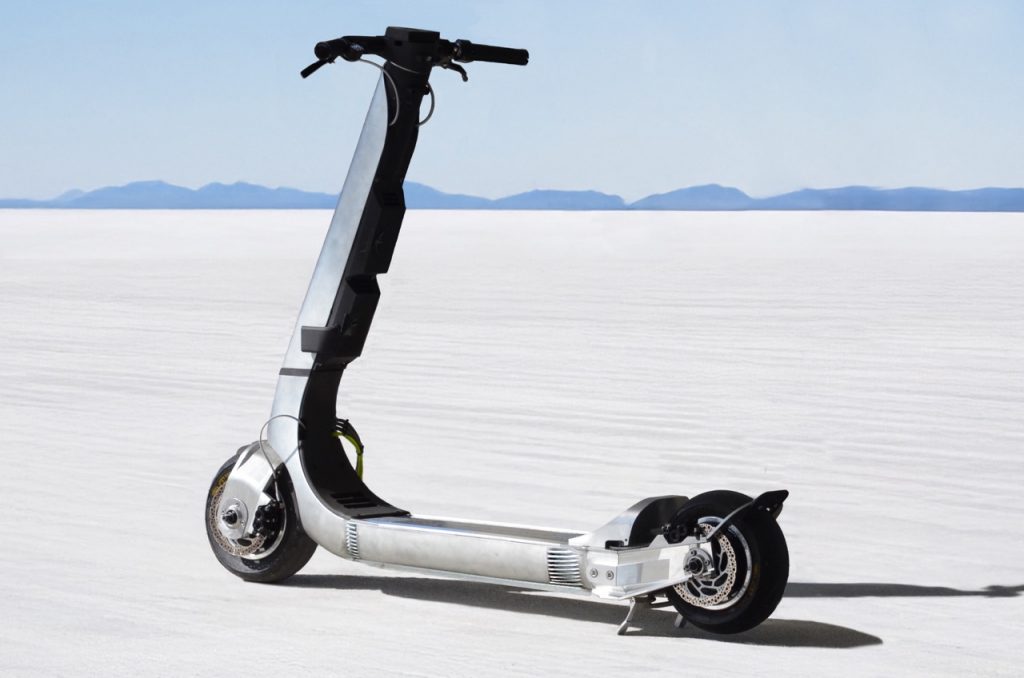
For 18 months, the team has been developing this scooter in secret with a target of being the fastest scooter in the world. It starts with the monocoque chassis, which they call the “monocurve.” The company says it has the ability to take a peak load of 1,400 pounds, the equivalent of three Harley-Davidsons. Having driven it over cobblestones in Lower Manhattan, I believe it.
“Working in motorsport I heard a phrase ‘Racing Improves The Breed,’ said Morgan. “As The Turbo development progressed, we realised that we were creating a monster. The Turbo called upon all of our prior experience from the world of Formula One Advanced Engineering, and we identified there was the potential to do something unique and exciting in this sector: the fastest e-scooter in the world, perhaps even a Tesla-beater.”
Obviously, they aren’t handing out 100 mph scooters to just anyone, so the Turbo gets numerous upgrades, including twin motors and controllers with more than 300A of peak current and a bigger battery setup. The company says that at full power, it’s the equivalent of fast-charging 1,500 iPhones… at the same time.
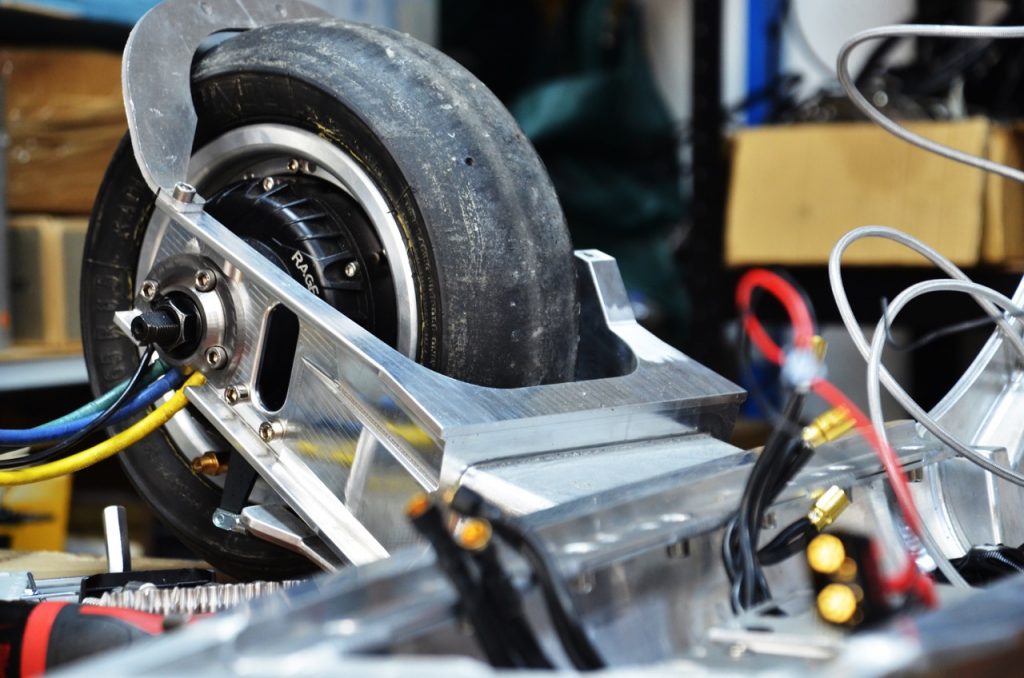
The scooter also uses a version of the company’s Safesteer system, which utilizes custom torsion springs tuned to make it feel like you’re piloting a scooter with larger wheels. In my experience with the smaller version of this, it felt like the scooter was able to maintain a course much easier than the cheap-o one I bought off of Amazon for $200.
I’m not sure I’d be the first one to ride this, though, and in testing at Goodwood, the engineers used BMX racer Tre Whyte as the guinea pig/test rider.
This isn’t just a concept; the company says it’ll make you one $29,500 if you meet the qualifications as a rider (presumably, that you have some experience and won’t sue them). If that’s you, go to their site and prove you are worthy. To quote the great Garth Algar, I am not worthy.
Photos: Bo

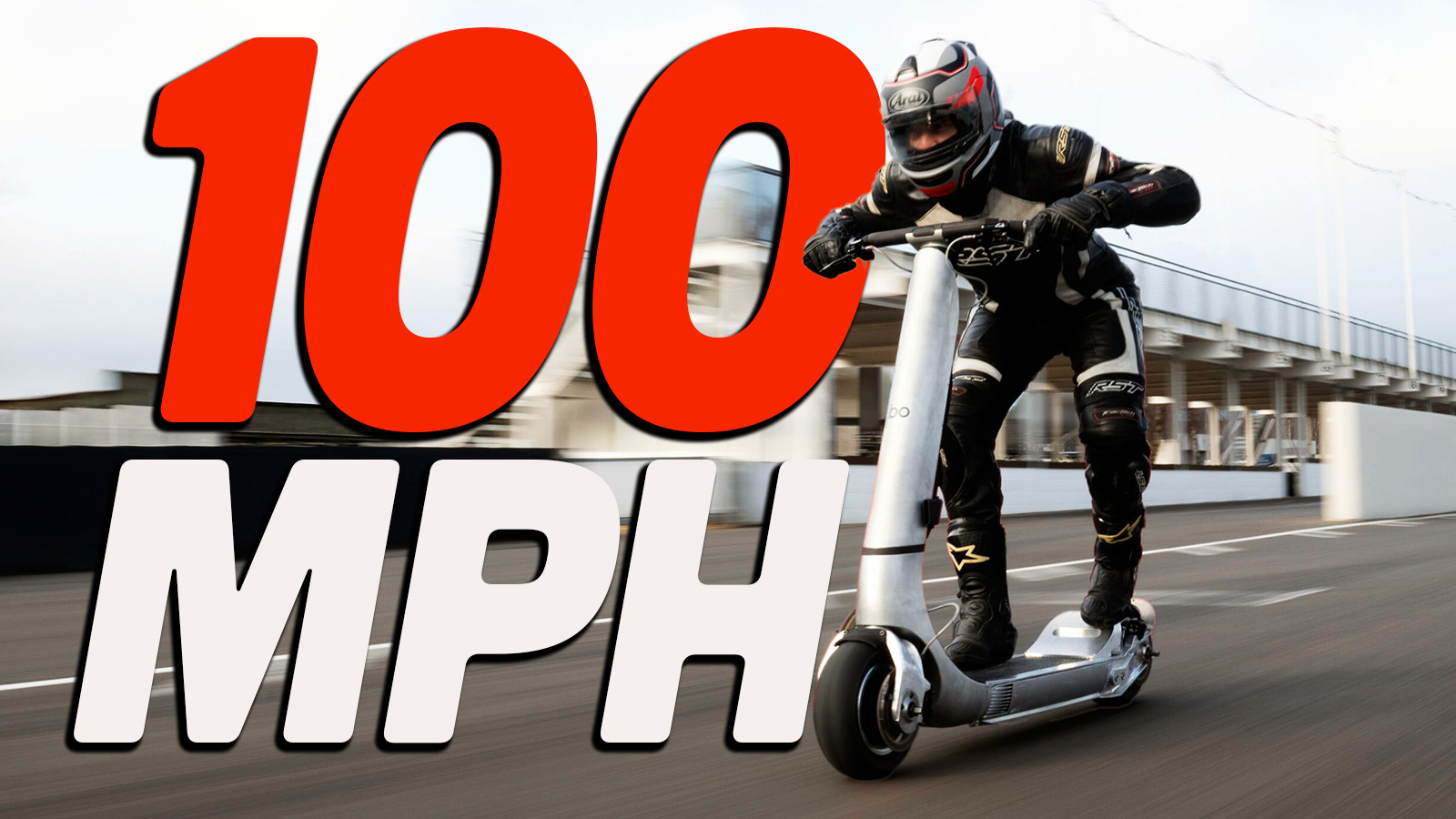






Sounds like fun, but I’m balance-challenged, so I’ll pass.
High powered e-Scooters. No inherent issues in regard to stopping or anything, amirite?
Some day, someone, will write a history piece on the times when Humanity thought that tiny wheels and minuscule wheelbase do a transportation device make, but we’re not there yet.
A friend of a friend works at an emergency room in one of the eastern european capitals and shared that just at their fine establishment, since rental scooters became a thing they get in a night the amount of broken arms, noses, jaws and medium to severe facial traumas they used to get in a week.
Kids today are all risk averse because their parents don’t get them the cool toys.
https://youtu.be/EinoaONHdRA?si=BKnVYtA_gz_D6Qsa
If I had this thing, I would be a red smear inside of a week.
I would make a joke about Americans using anything but the metric system, but then this is British, so…
I was just about to do the same thing, but did a search for “metric”..
By my math with the iphones, that is 30 KW, or roughly 40 HP. But the article also states 24 KW, which is roughly 32 HP. Either way it sounds less impressive than the number of iphones, but is still way too much for this chassis.
We’ve got to stop asking how this timeline could get any stupider, the writers are taking it as a challenge.
Because killing people is the fastest way to get regulated? If that’s their goal, then I’d say they’re well on their way.
If it were a $300 scooter I might be quite worried, imagine Oprah handing out Veyrons for everybody.
$3000, kind of problematic, that would be almost as bad as selling 35hp dirt bikes to anyone with $3000 and turning them loose in traffic — oh wait, never mind
$29000 ?
Not really a problem, other than them getting stolen occasionally. This is less of a problem than 200 mph cars available to people with good credit and bad judgment.
Sure, they are probably pretty dangerous to the rider, but not much more dangerous than longboards, bicycles, or motorcycles. I’m sure it’s safer than 60mph on a longboard.
As to the dangers to society, the kinetic energy of someone on a scooter hitting you is relatively small compared to most vehicles.
I’m really curious about the suspension. Tiny wheels and wheelbase plus high center of gravity and scooter steering isn’t the model of stability.
Of course, when $300 scooters have 32 horsepower and no suspension, it will be a problem. That will happen before you know it.
Having ridden bikes and cycles, these are far worse. You have a super high center of gravity and tiny wheels. A misplaced crack in the pavement can make for a real bad day.
Also, killing rich people is the fastest way to get things to change. See also: Mansfield bars.
I got around NYC in the late 70s on a skateboard and roller skates, and cracks and holes in the surface weren’t that big a problem as long as you keep your knees bent. The trouble with scooters is it’s all to easy to steer it out from underneath yourself.
Btw, the sidewalk in front of the old Time Life building across from Radio City is super fast.
Well, that’s a memory. High-five. We probably spilled blood in the same spots.
A skateboard doesn’t need momentum/gyro to not tip over. The bigger the wheels the more momentum/gyro the more stable the scooter (or bike or motorcycle or scooter or unicycle).
Hasn’t affected crime much.
No thanks. The wheels are way too small to handle real world roads with potholes, frost heaves, speed bumps, debris, etc. Small wheels also limit gyro stability, making high speed handling suspect.
Anyone who’s riden sportbikes knows acceleration is limited by the tendency to wheelie. This looks to have a higher CG and shorter wheelbase, so I don’t believe their acceleration claims.
This is AWD. The rear wheel is only half the thrust (presumably). You can tune the acceleration profile to prevent wheelies, but whether or not they actually did is another question entirely.
If you can program a Segway or an electric unicycle to accelerate and brake, this should be simple.
I always assumed that modern motorcycles’ wheelie tendencies could be designed and or programmed out much like traction control, or ABS but that being able to wheelie was a feature not a bug.
I haven’t ridden a motorcycle in decades, but ABS on a bike seems weird.
I don’t follow motorcycles as much as cars but I feel like I remember some brand a couple of years back (maybe more) that had included a gyro of some sort to help stabilize/hold/make more predictable wheelies.